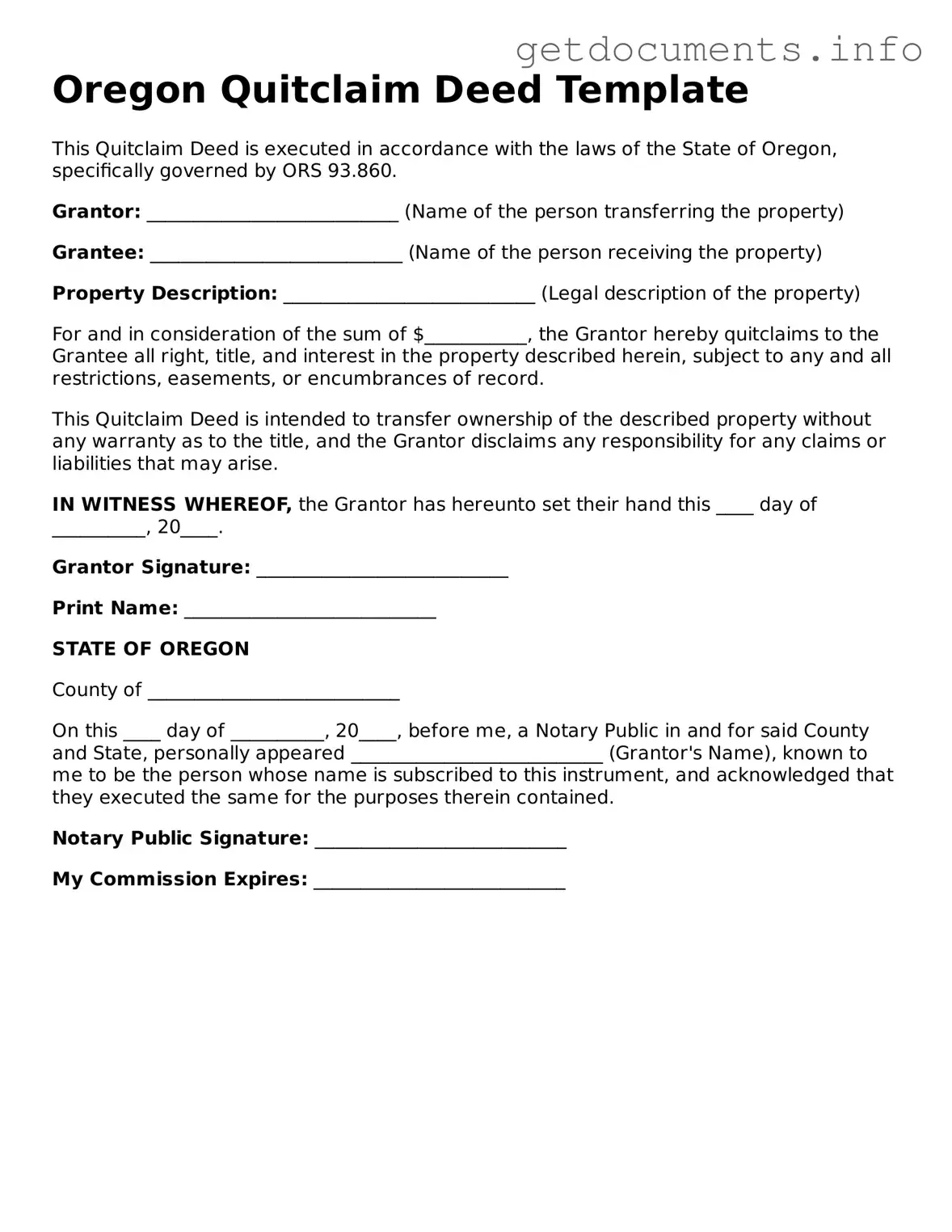The Oregon Quitclaim Deed form serves as a crucial legal document for property transfers, allowing individuals to convey their interest in real estate without making any guarantees about the title. This form is particularly useful in situations where the transferor may not have complete ownership or where the parties involved have a high level of trust. By using a quitclaim deed, the grantor relinquishes any claim to the property, which can simplify the process of transferring ownership, especially among family members or in divorce settlements. The document must be properly filled out, including essential details such as the names of the parties, a legal description of the property, and the date of the transfer. Additionally, to ensure the deed is legally binding, it must be signed in the presence of a notary public. Once completed, the quitclaim deed should be recorded with the county clerk to provide public notice of the change in ownership. Understanding the nuances of this form is vital for anyone looking to navigate the complexities of real estate transactions in Oregon.
